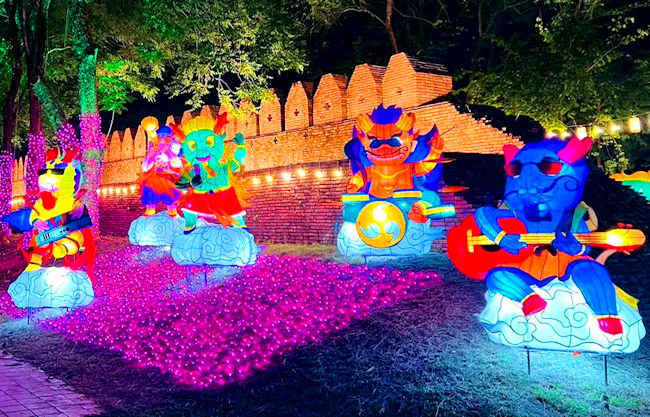From June to August, Nan’s historic city center is glowing with lanterns, light tunnels, cultural markets, and live performances to revive local heritage and attract visitors
Nan’s historical old town is being illuminated with vibrant light displays and cultural activities over the next two months as part of an initiative to revive the province’s cultural charm and boost tourism.
As part of the event titled “Magical Charm of Nan City: A Living Old Town,” lights will adorn landmarks such as Nan City Wall, Kuang Mueang Nan Walking Street, Kuang Noi Mueang Nan Walking Street, Phakong Road, and Mahawong Road from June 6 to August 6.
The event is part of the broader initiative “The Old City of Nan is Alive: Making a Cultural City to Heritage” led by the Nan Tourism and Sports Office. It aims to promote cultural tourism and engage local communities in sustainable heritage preservation.
The old town area will be decorated with traditional Lanna lanterns, known as Kom Pad, alongside larger lanterns depicting mythical creatures from Himavanta forest in Thai literature and the 12 Chinese zodiac animals.
Highlights also include a light tunnel, a music festival, and a cultural market featuring traditional northern food, local crafts, and live performances, held on Fridays and Saturdays during the first and third week of each month.
Nan Deputy Governor Wilaiwan Budasa said the event not only supports local tourism but also positions Nan as a potential global cultural destination.
“Nan is a province with a deep cultural identity, history, and local wisdom. This project is an important step in revitalising the old city while upgrading the quality of tourism,” she said.
The Nan Tourism and Sports Office added that the festival also aims to inspire local pride and attract both domestic and international tourists during the monsoon season.
Nan province in northern Thailand, with a history spanning over 700 years, evolved from an independent kingdom into part of the Lanna Empire and later Thailand. Today, it is renowned for its Lanna-style architecture, historic temples, and unique cultural traditions, according to the Tourism Authority of Thailand.



